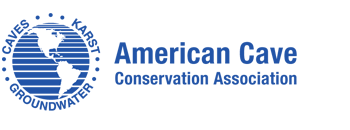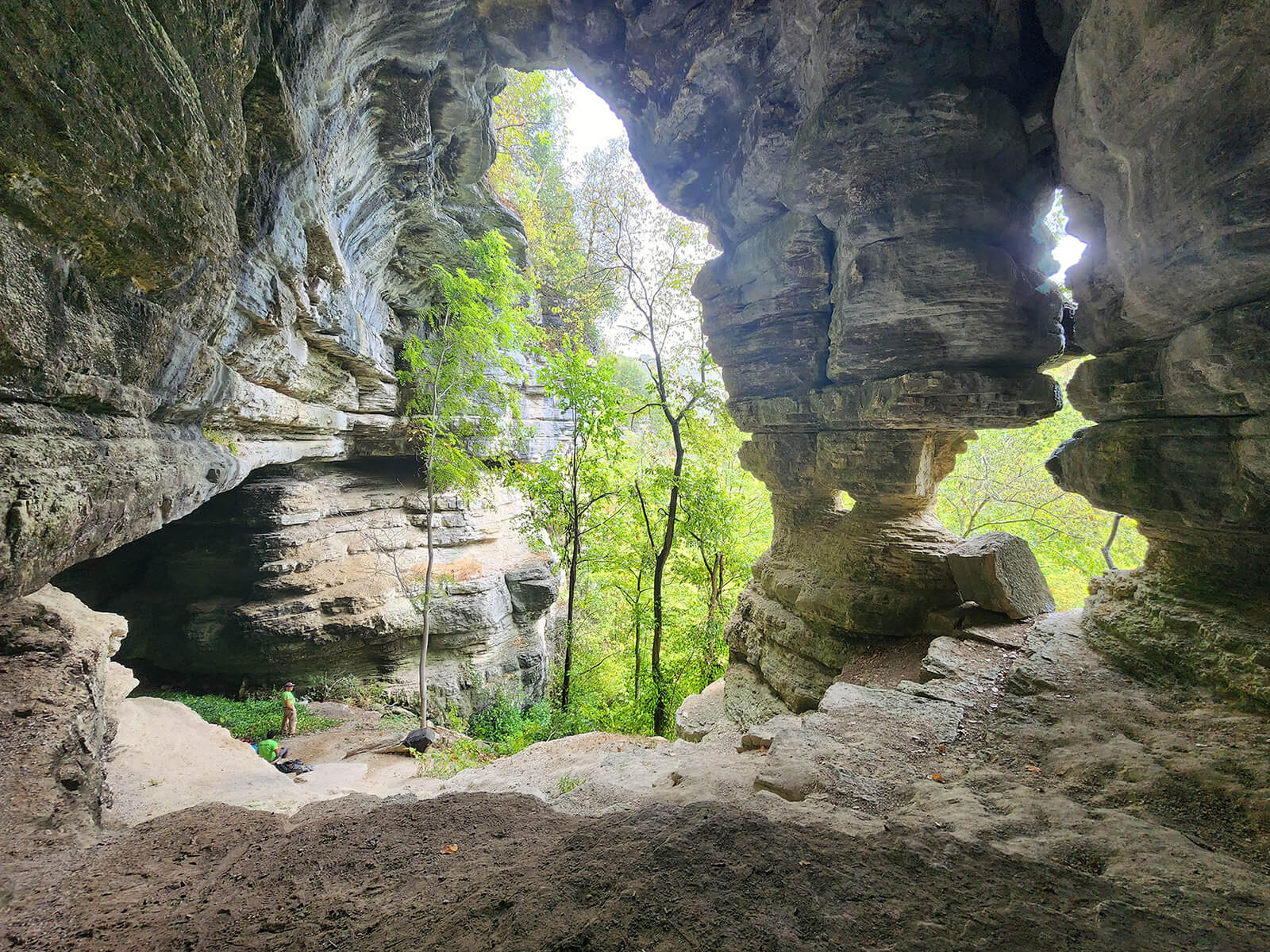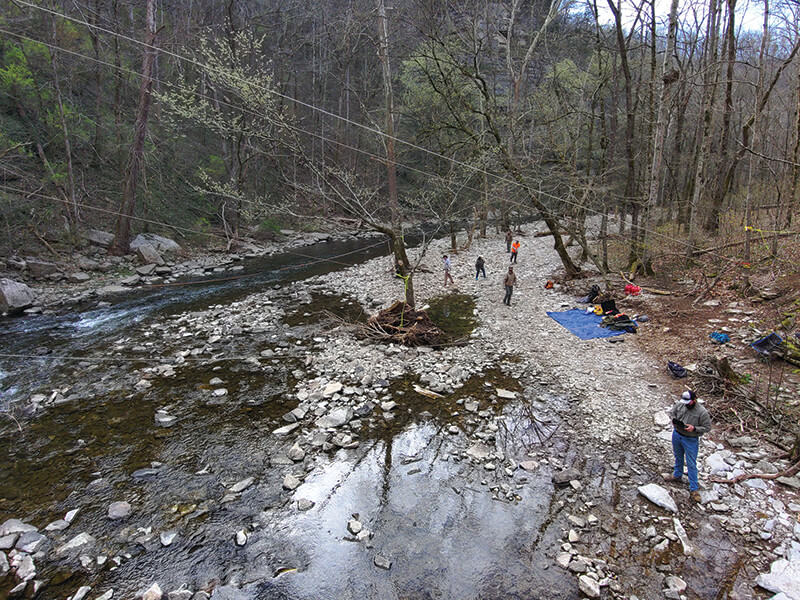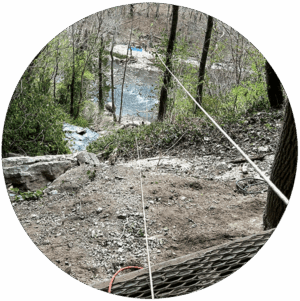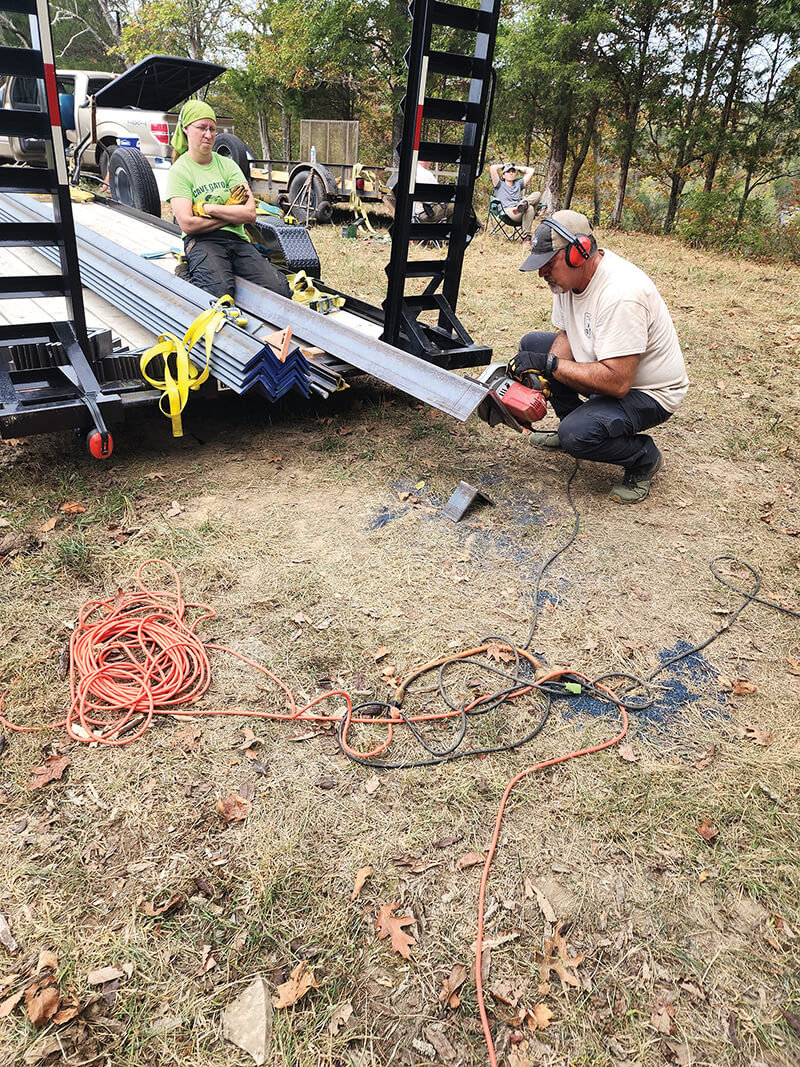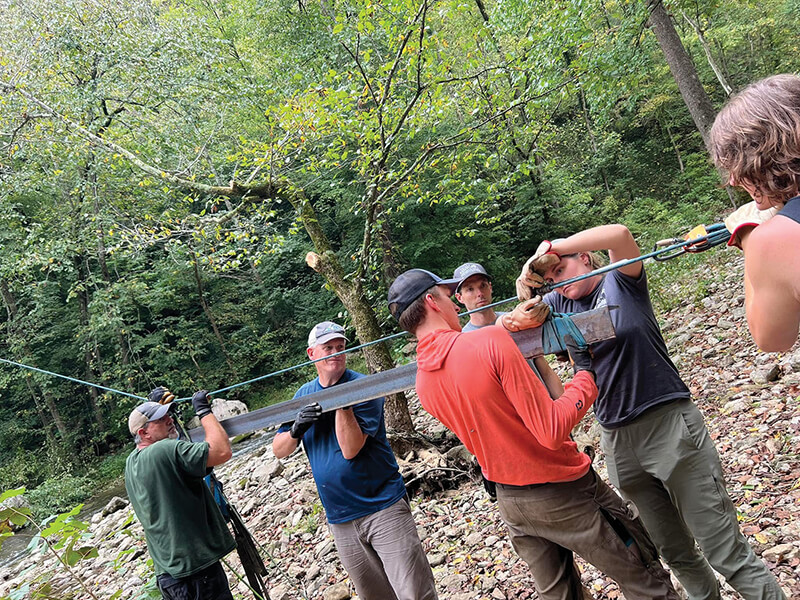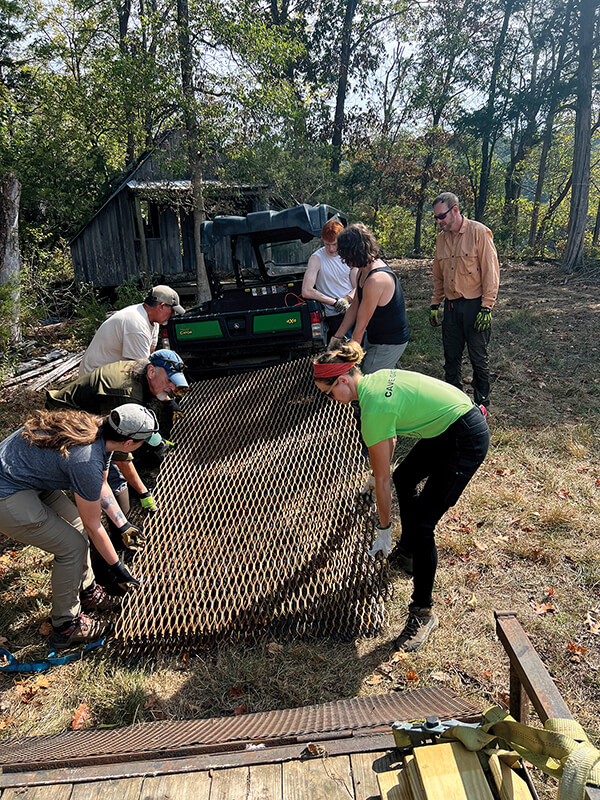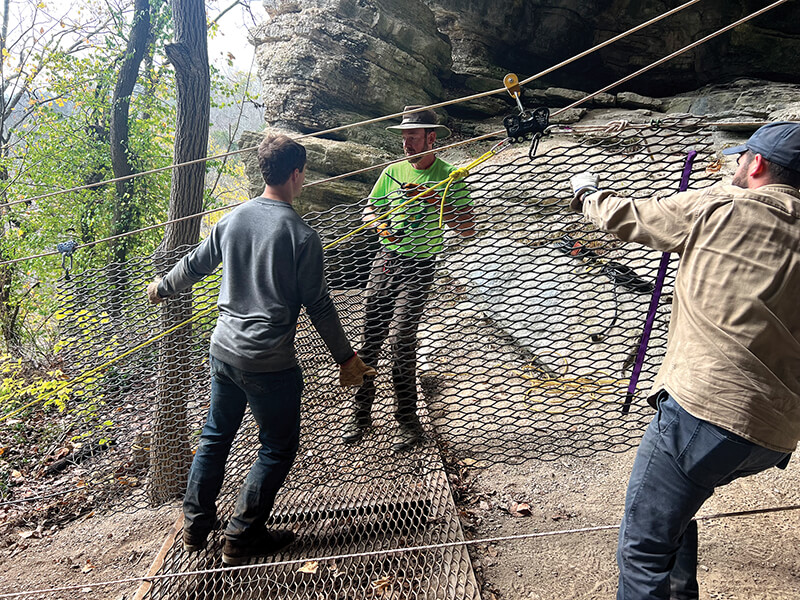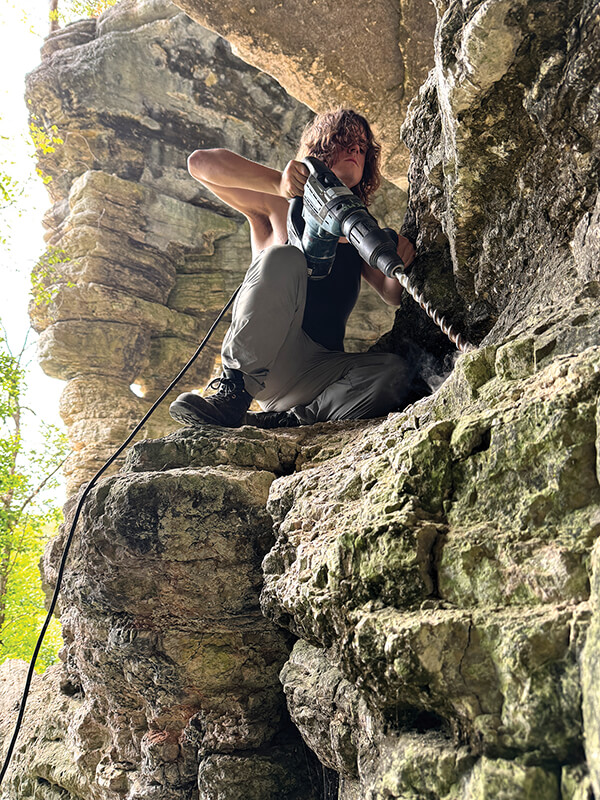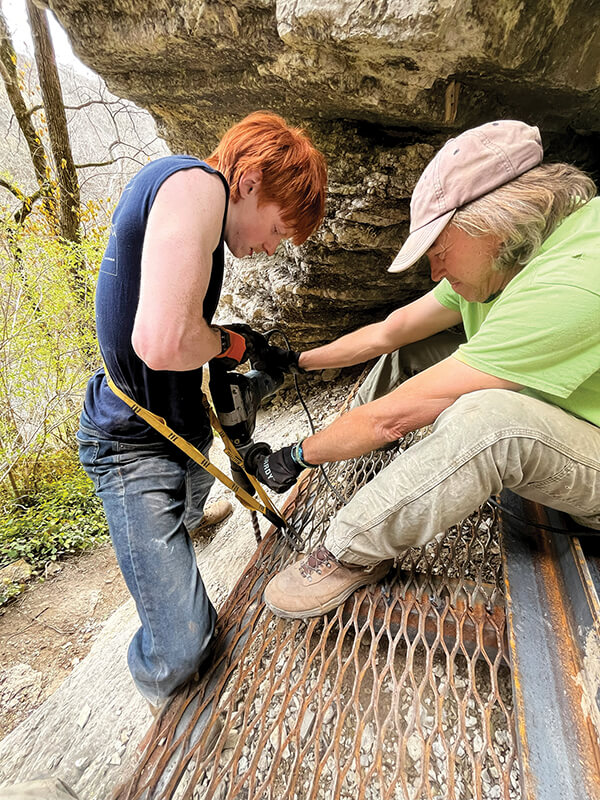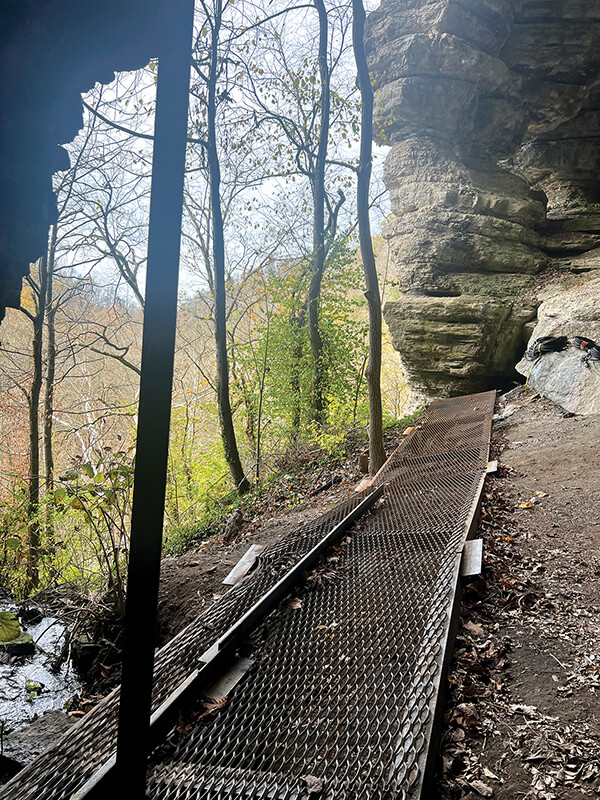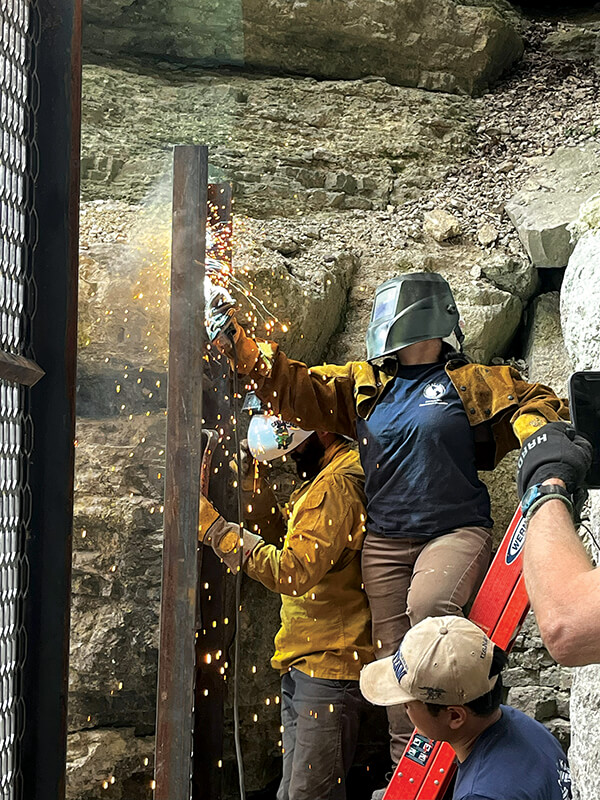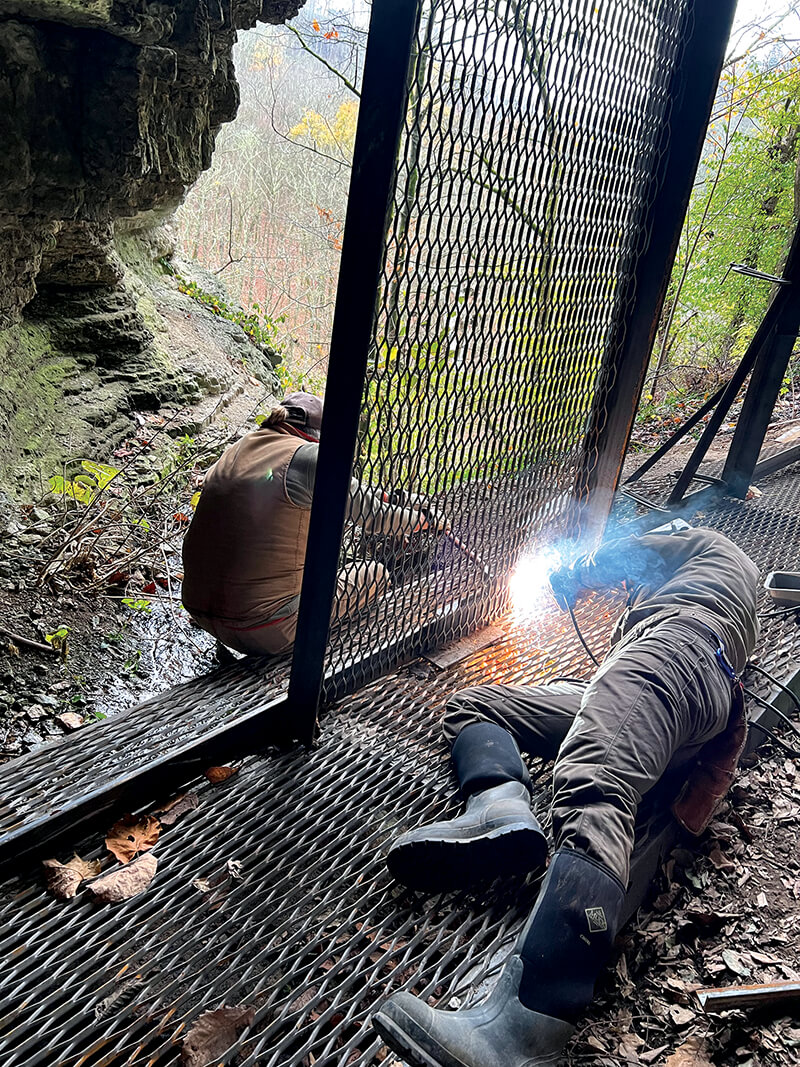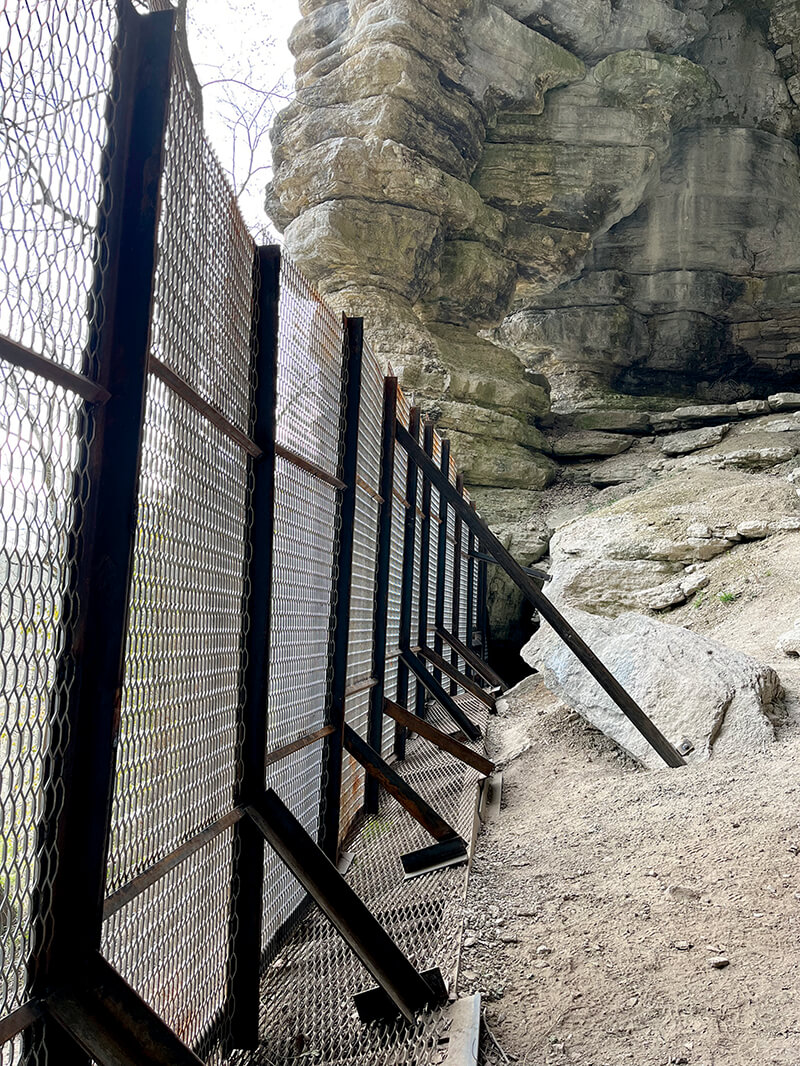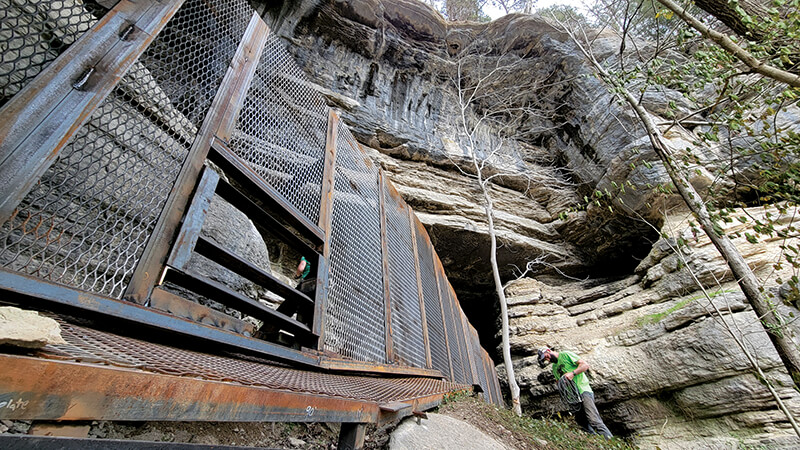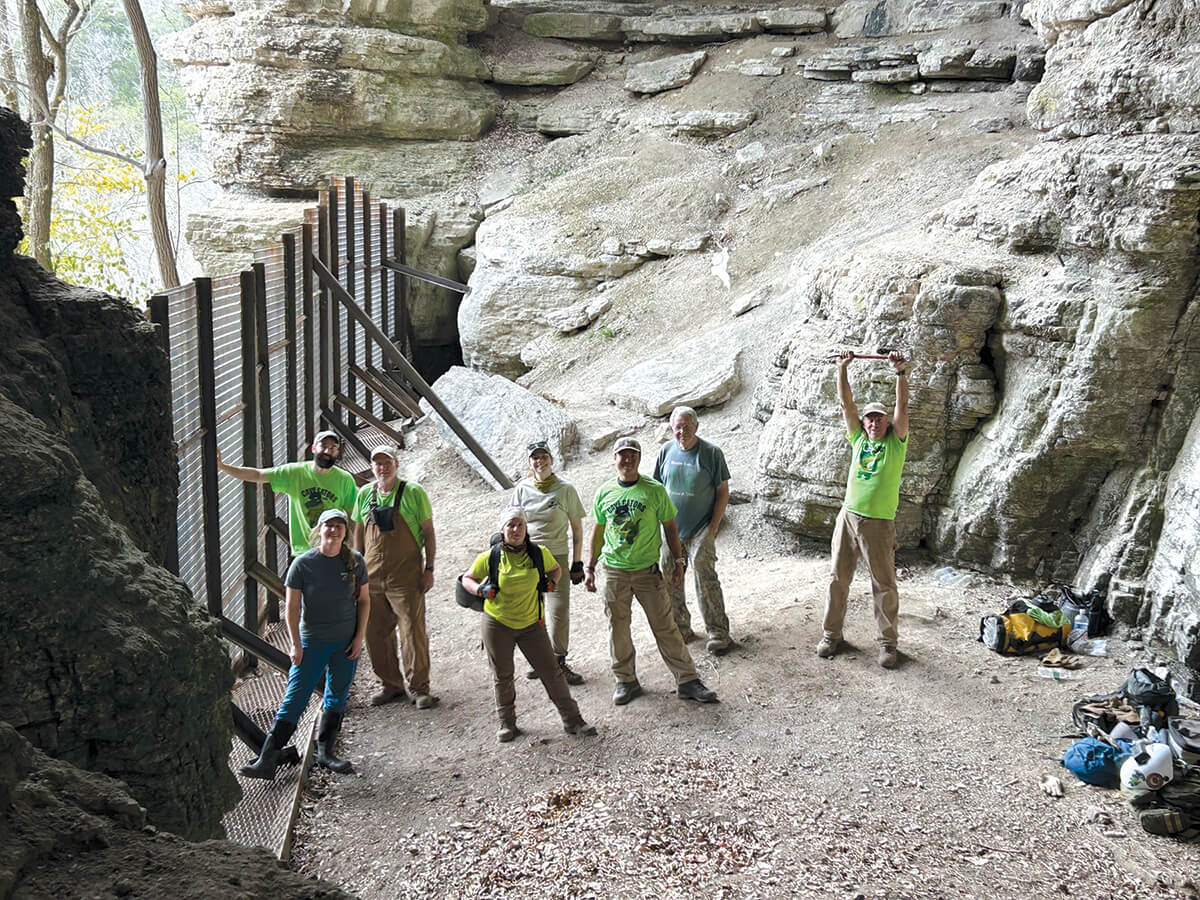Overstreet Cave Gate
Conservation Isn’t Easy
By Jay Pruitt, ACCA Tour Staff Supervisor/Collection Curator
Over the course of six months, ACCA Conservation Director Jim “Crash” Kennedy and a dedicated team of volunteers from 13 different organizations embarked on what Crash describes as the most challenging cave gating project that he has ever attempted. The team, which included representatives from government agencies, conservation organizations, nonprofits, universities, and private businesses, consisted of over 40 individuals. They participated in multiple week-long expeditions, each progressively more difficult than the last.
Why Overstreet Cave Matters
The focus of the effort was Overstreet Cave, a remote and ecologically sensitive site that serves as a summer roost for the endangered Gray Bat (Myotis grisescens). This species, one of the first to be listed as endangered by the U.S. Fish and Wildlife Service, remains under protection and is classified as a Species of Greatest Conservation Need in Kentucky.
The Kentucky River Palisades, with its steep gorges and limestone cliffs, provides an ideal habitat for various bat species, including the Gray Bat, Indiana Bat (Myotis sodalis), and Northern Long-Eared Myotis (Myotis septentrionalis), which has recently been classified as federally endangered due to White-Nose Syndrome (WNS). These bats roost in the region’s cliffside caves and forests, with Overstreet Cave being one of the most significant sites, hosting an estimated 25,000 Gray Bats.
Gray bats are highly selective about their roosting sites, requiring caves with stable temperatures and humidity to rear their young. Overstreet Cave’s microclimate provides these essential conditions, making it a critical maternity colony. Female Gray Bats give birth to a single pup each year, and disturbances before the bats can fly may cause flightless pups to fall to their deaths, potentially leading to roost abandonment and population decline. While a habitat notice is posted at the entrance of Overstreet Cave, gating the cave provides an added layer of protection for this vulnerable species.
An Uphill Battle—Literally
Overstreet Cave is situated deep within the rugged Kentucky River Palisades, in one of the area’s steep gorges and bisected by a flowing creek, making access particularly challenging. The cave’s isolation—far from established roads or infrastructure—complicated every aspect of the operation, requiring both physical endurance and innovative problem-solving.
Above Photos: The complicated highline rigging used to haul the steel and equipment up to the cave took more than a half day to set up each time, and took a team of 6-8 people to load and haul each time. Photos by Brent Harrel (top) and Calvin Andries (left)
Steel, Strength, and Strategy
Logistical challenges were a significant hurdle, transforming what would typically be a straightforward project into a complex and demanding task. Volunteers took on a variety of roles requiring precision and physical strength. The first task involved measuring and cutting large steel components, which required specialized tools and accuracy. Once the steel was prepped, the next challenge was transporting the heavy materials several hundred feet down a steep, undeveloped footpath to the creek bed below, using ATVs and UTVs. The uneven and treacherous terrain added considerable difficulty, requiring careful coordination, teamwork, and several mechanical repairs along the way.
Lifting the Load— Highline Engineering
At the creek bed, a second team took over, rigging a complex highline system to transport the steel up the cliff face. Using ropes and pulleys, the system carried thousands of pounds of steel 250 feet upward, enabling the team to reach the construction site above. The highline system was essential for navigating the steep, unstable terrain and ensuring safe and efficient delivery of the materials.
Built for Protection – Bat-Friendly by Design
Once the materials arrived at the site, a third team began assembling the cave gate—a uniquely designed structure known as a Powers Fence. This design, developed by the late ACCA President Roy Powers, is used for Gray Bat maternity caves. It is based on industry-standard, bat-friendly gate designs developed by the American Cave Conservation Association and Bat Conservation International, and is widely accepted by organizations like the U.S. Fish and Wildlife Service, the National Park Service, U.S. Forest Service, Bureau of Land Management, The Nature Conservancy, and the National Speleological Society.
The Powers Fence has been successfully installed at only three other Gray Bat caves to date— Bellamy and Tobaccoport Saltpeter Caves in Tennessee, and Key Cave in Alabama. While no gate can provide 100% security against determined trespassers, these “best practice” bat gates offer the highest level of protection while maintaining biological transparency.
It is essential that these gates do not disrupt the cave’s natural biology, including temperature and humidity, air and water flow, nutrient distribution, or the movement of animals in and out. These factors are crucial for the bats’ choice of roosting sites, so preserving these conditions is critical.
The assembly of the Powers Fence was a meticulous process, with each part carefully positioned and secured to form a durable, effective barrier that would protect the cave while allowing for ongoing research and conservation efforts. Additionally, the Powers Fence pays tribute to the late Roy D. Powers, Jr. Powers was a pioneering figure in bat-friendly cave gating initiatives and has shaped modern cave gate design and installation into what it is today.
Weathering the Storm with Resilience & Commitment
Throughout the project, the team faced not only physical challenges but also severe weather conditions. Torrential rains and high winds from Hurricane Helene, followed by freezing temperatures and a blizzard, halted progress at various stages. Despite these setbacks, the team adapted and continued working with determination. By the third and final expedition, the weather had improved, though conditions remained unpredictable, and allowed the team to make significant progress.
By the end of the project, the team had successfully completed one of the most challenging cave gate installations ever attempted, showcasing extraordinary teamwork, resilience, and commitment. Kennedy’s leadership, combined with the volunteers’ dedication, ensures the long-term protection of Overstreet Cave.
Why We Do This Work
Now, you may ask yourself, what motivates people to dedicate so many hours to such demanding projects? For many volunteers across the U.S., like Dylan Wilson states, “It’s a deep sense of duty and responsibility to protect the unprotected.” One of my favorite quotes comes from being in the truck riding to a job site with Jim as well. He stated, “There’s never a bad time to step up and do something good for the environment.” This sentiment resonates deeply with myself, and other volunteers, motivating us to protect these natural wonders. Our work on cave gate installations is driven by a commitment to preserving natural history and a sense of pride in knowing that the efforts are crucial to safeguarding the environment.
The physical and mental challenges involved in building cave gates also serve as motivators. While demanding, the process is rewarding, offering a profound sense of accomplishment upon successful installation. And, as was the case with Overstreet Cave, there’s often a collective sigh of relief when the job is completed. After all, caves often house irreplaceable resources, including unique ecosystems, fragile geological formations, and archaeological artifacts, all of which are vulnerable to damage from human activity, climate change, or vandalism. Installing gates ensures the protection and preservation of these invaluable resources.
In Gratitude
The ACCA would like to extend a heartfelt thank you to all the volunteers involved, including members of our staff: Cole Avery, Maddox Carroll, Jim “Crash” Kennedy, Jay Pruitt, and Dylan Wilson, as well as the following organizations: Cave Gators, Kentucky Transportation Cabinet, U.S. Fish and Wildlife Service, Kentucky Department of Fish and Wildlife Resources, Kentucky Natural Lands Trust, Office of Kentucky Nature Preserves, Kentucky Bat Working Group, East Kentucky Power Cooperative, Bernheim Forest and Arboretum, Eastern Kentucky Power Co- op, HMB Engineers, University of Kentucky, Third Rock Consulting, Lochner, and Lotus Enterprises.
Funding for the Overstreet Cave Gaiting Project was provided by the Kentucky Transportation Cabinet with in- kind contributions from all of the participating partners.
The views and conclusions contained in this document are those of the authors and should not be interpreted as representing the opinions or policies of the U.S. Government or the Commonwealth of Kentucky. Mention of trade names or commercial products does not constitute their endorsement by the U.S. Government or the Commonwealth of Kentucky.
The American Cave Conservation Association (ACCA) is a National 501 (c) 3 Nonprofit Organization.
Donations and Memberships are Deductible to the Fullest Extent Allowed by Law.
